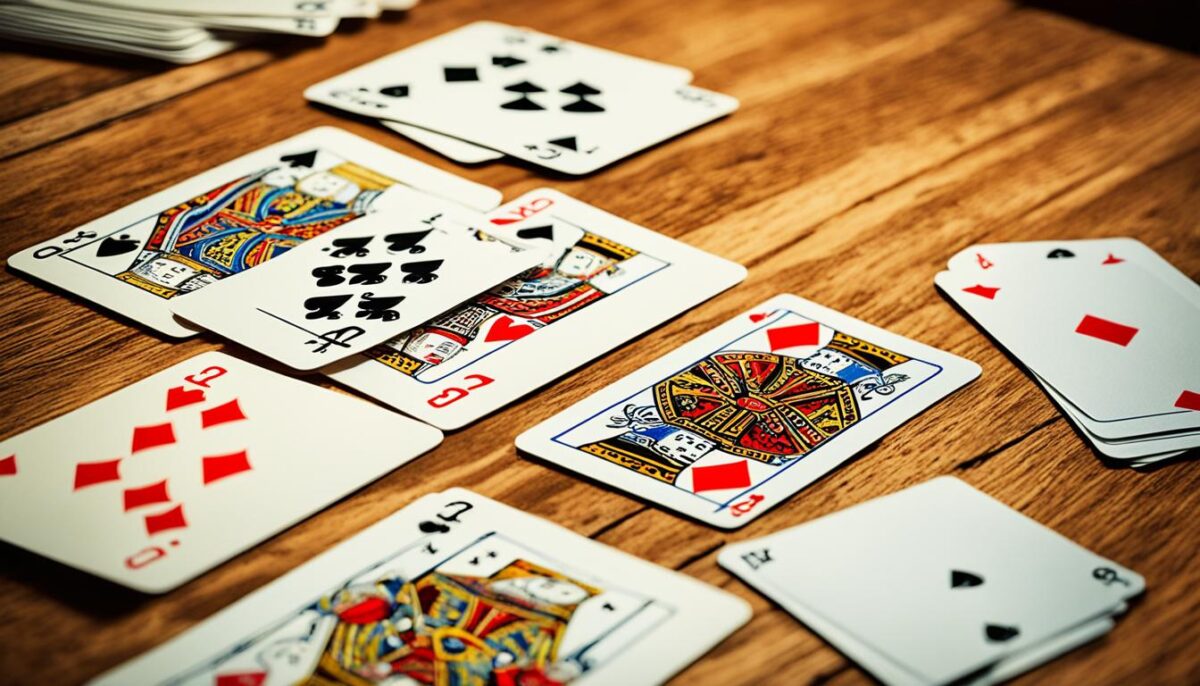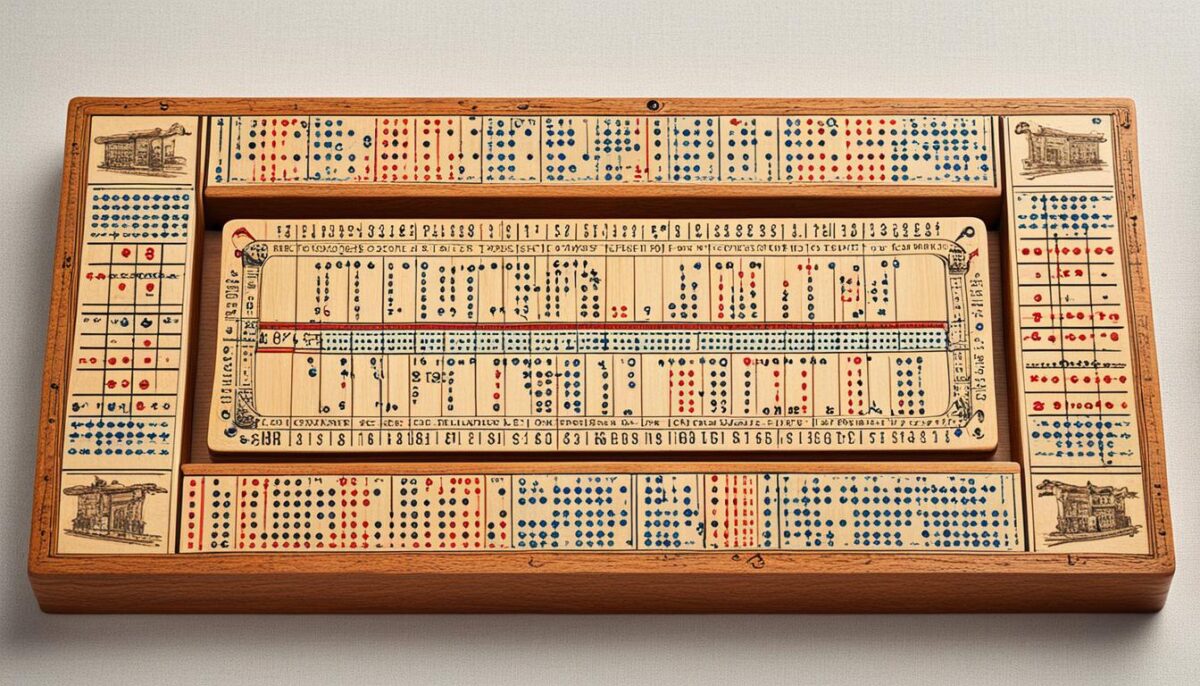Welcome to the world of traditional card games, where strategy, skill, and a bit of luck come together to create hours of entertainment. In this article, we will be diving into one of the most beloved and challenging card games of all time – Cribbage.
Cribbage, a game that has stood the test of time, holds a special place in the hearts of card game enthusiasts around the world. Whether you’re a seasoned player or new to the game, Cribbage offers a unique blend of strategy and excitement that keeps players coming back for more.
But what makes Cribbage so special? The answer lies in its rich history, intricate rules, and the thrill of scoring the elusive perfect 29. Join us as we explore the origins, rules, strategies, and undeniable charm of this classic card game.

So, whether you’re a fan of card games, an avid Cribbage player, or simply looking for a new game to try, this article is for you. Get ready to embark on a journey through the world of traditional card games and discover the captivating allure of Cribbage.
A Brief History of Cribbage
Explore the fascinating origins of cribbage, a beloved traditional card game that has stood the test of time. Cribbage has its roots in 17th-century England, making it one of the oldest card games still played today.
The origins of cribbage can be traced back to Sir John Suckling, a renowned English poet, and play enthusiast. It is believed that Suckling invented the game as a variation of the previously popular game called “Noddy.” Over time, cribbage evolved and gained popularity, becoming a staple in pubs, clubs, and households.
The game’s name, “cribbage,” stems from the wooden board or “crib” that players use to keep score. The enduring appeal of cribbage lies in its simplicity and strategic gameplay, which has captivated card game enthusiasts for centuries.
“Cribbage, the grand old man of card games, exudes history, charm, and excitement.” – Card Game Historian
Throughout history, cribbage has not only provided hours of entertainment but has also influenced the development of other popular card games. For instance, the “pegging” scoring system in cribbage was adapted into the scoring system used in games like Skat and Pinochle.
Today, cribbage continues to thrive and has even gained a dedicated following in various countries around the world. Its rich history and timeless gameplay make cribbage a truly iconic card game that bridges generations and cultures.

Cribbage’s Journey Across the Globe
As cribbage gained popularity, it spread beyond the shores of England. It made its way to North America during the colonial era, where it was embraced by early settlers and became a favorite pastime in taverns and community gatherings.
The game’s enduring appeal has led to the formation of cribbage leagues and clubs globally, where enthusiasts gather to compete and share their love for the game. Cribbage tournaments, both offline and online, attract players of all skill levels, further cementing cribbage as a beloved card game with a vibrant community.
The Impact of Cribbage
What sets cribbage apart from other card games is its unique scoring system, which challenges players to strategize and think several moves ahead. The combination of luck and skill required in cribbage has made it a favorite among players seeking a game that offers a balance of both.
To fully understand cribbage’s impact, it’s essential to dive into its rules, scoring methods, and strategies. In the next section, we will explore the intricacies of cribbage, allowing you to master the game and appreciate its rich history even more.
| Year | Event |
|---|---|
| 1630s | Development of the game by Sir John Suckling |
| 17th century | Cribbage spreads across England |
| 1700s | Cribbage reaches North America |
| 19th century | Formation of cribbage leagues in England |
| 20th century | Cribbage gains popularity globally |
Rules and Scoring in Cribbage
Understanding the rules and scoring system of Cribbage is essential to play the game successfully. This section will guide you through the various aspects of Cribbage gameplay, including the objective, dealing, playing, and scoring.
In Cribbage, the objective is to be the first player to reach a predetermined number of points, typically 121. To begin the game, a dealer is chosen, and each player is dealt six cards. From these six cards, each player selects two cards to form the “crib,” which will be used for scoring later.
During gameplay, players take turns playing one card at a time, starting with the non-dealer. Each card played is added to a running total, and players aim to make combinations that score points. This process is known as the “pegging” phase and involves calculating points for card combinations such as pairs, runs, and adding up to 15.
Scoring in Cribbage happens during two main phases: the pegging phase and the counting phase. The pegging phase awards points for card combinations played during gameplay, while the counting phase focuses on the cards remaining in players’ hands and the crib. The crib, which consists of the cards put aside at the beginning of the game, can often lead to substantial scoring opportunities.
One of the most coveted achievements in Cribbage is achieving the perfect 29 score, which involves playing specific card combinations that result in the maximum possible score for a hand or crib. This elusive score adds an element of excitement and challenge to the game, keeping players engaged and strategizing throughout.
Key Cribbage Scoring Combinations
Here are some key scoring combinations to be aware of in Cribbage:
- Fifteens: A combination of cards that add up to 15 scores 2 points.
- Pairs: A pair of cards of the same rank scores 2 points.
- Runs: Three or more consecutive cards of any suit (e.g., 3-4-5) scores 1 point per card in the run.
- Flush: Four cards of the same suit in hand or crib scores 4 points. A flush with the starter card (the card turned up after dealing) scores 5 points.
By familiarizing yourself with these scoring combinations and understanding the rules of Cribbage, you can approach the game with confidence and strategically aim for high-scoring opportunities.
Continue reading to the next section for valuable strategies and tips to enhance your Cribbage gameplay.
Strategies and Tips for Cribbage
Mastering the art of Cribbage requires more than just a basic understanding of the rules. By incorporating effective strategies and tips into your gameplay, you can elevate your skills and enhance your chances of success. Here are some valuable insights to help you improve your cribbage gameplay.
Firstly, consider the power of card combinations. Identifying the right cards to keep in your hand and selecting advantageous cards to discard to the crib can significantly impact your score. Look out for runs, pairs, and flushes, as these combinations can boost your points.
In addition, mastering positional play is crucial in cribbage. By strategically playing your cards and understanding how to manipulate the pegging process, you can gain an edge over your opponent. Focus on blocking their scoring opportunities while creating favorable positions for yourself.
During the counting phase, it’s essential to maximize your points. Utilize pegging strategies to strategically play your cards and disrupt your opponent’s pegging flow. Look for opportunities to reach 15s, create runs, and utilize the power of the “go” pegging rule to gain an advantage.
